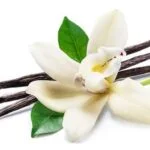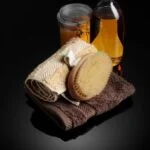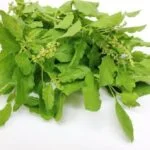The world of aromatherapy is known for its vast array of essential oils, each with its own unique benefits and properties. Among the many options available, tea tree oil has been gaining significant popularity in aromatherapy practices.
This versatile oil possesses a wide range of therapeutic properties that make it highly effective in promoting overall well-being. Whether you are seeking relief from stress, respiratory congestion, or skin conditions, tea tree oil can be a powerful ally in your aromatherapy routine.
As more people discover the potential benefits of tea tree oil in aromatherapy, it’s important to understand both the origins and composition of this remarkable substance. Tea tree oil has indigenous roots, deriving from the Melaleuca alternifolia plant native to Australia. Extracting the oil involves a careful process that ensures its purity and potency.
Its chemical composition is what gives tea tree oil its powerful antimicrobial, anti-inflammatory, and antiseptic properties. When used correctly and in high-quality form, tea tree oil can offer impressive results.
Scientific research supports the effectiveness of tea tree oil in aromatherapy treatments. Not only does it possess numerous therapeutic properties, but studies have shown its ability to address common ailments such as stress relief, respiratory congestion, and various skin conditions.
By incorporating tea tree oil into your daily routine, you can harness its natural healing power and experience firsthand the benefits it has to offer. So let’s embark on a journey exploring the wonders of tea tree oil for aromatherapy bliss.
Understanding Tea Tree Oil
Tea tree oil has gained immense popularity in the world of aromatherapy due to its numerous therapeutic properties. However, before delving into its benefits for aromatherapy, it is important to understand the origins, extraction methods, and composition of this unique essential oil.
The Origins of Tea Tree Oil
Tea tree oil, also known as melaleuca oil, originates from Australia. It has been used for centuries by indigenous communities such as the Aboriginal people who recognized its medicinal properties. The leaves of the tea tree plant (Melaleuca alternifolia) were traditionally crushed and applied as a poultice to treat various skin conditions and infections.
Extraction Methods and Chemical Composition
Tea tree oil is extracted through a process called steam distillation. The leaves of the tea tree plant are collected and submerged in boiling water. As steam passes through the leaves, it carries the volatile compounds that make up the essential oil which are then collected and condensed.
The chemical composition of tea tree oil is quite complex. It contains over 100 different components including terpinen-4-ol, cineole, alpha-pinene, and linalool among others. Terpinen-4-ol is considered to be the major active component responsible for many of tea tree oil’s therapeutic properties.
The Importance of Using High-Quality Tea Tree Oil
When using tea tree oil for aromatherapy purposes, it is crucial to opt for pure and high-quality products. This ensures that you are getting all the beneficial compounds without any additives or contaminants that may dilute its effects or cause adverse reactions.
To determine the quality of tea tree oil, it is advisable to look for reputable brands that provide information on their sourcing and extraction processes. Additionally, checking if it meets international industry standards such as ISO 4730 can further guarantee its purity and efficacy.
By understanding the origins, extraction methods, and composition of tea tree oil, you can better appreciate its potency and make informed choices when incorporating it into your aromatherapy routine.
The Therapeutic Properties of Tea Tree Oil for Aromatherapy
Tea tree oil is widely regarded for its numerous therapeutic properties, making it an excellent choice for aromatherapy. When used in aromatherapy practices, tea tree oil can provide a range of benefits due to its antimicrobial, anti-inflammatory, and antiseptic properties.
One of the key therapeutic properties of tea tree oil is its antimicrobial effect. Tea tree oil contains compounds like terpinen-4-ol that have been shown to effectively fight against bacteria, viruses, and fungi. This makes it particularly useful in treating respiratory conditions such as colds, sinus infections, and bronchitis. In fact, a study published in the Journal of Hospital Infection found that tea tree oil vapors were effective in killing airborne influenza virus particles.
In addition to its antimicrobial properties, tea tree oil also has strong anti-inflammatory effects. It can help reduce inflammation and soothe irritated skin conditions such as eczema, acne, and psoriasis. The anti-inflammatory properties of tea tree oil can also be beneficial for relieving muscle aches and pains when used in massage oils or bath blends.
Moreover, tea tree oil is known for its antiseptic properties. It helps prevent infection by cleansing wounds and promoting faster healing. Tea tree oil can be used topically on cuts, scrapes, and minor burns to keep them clean and free from bacteria.
To incorporate the therapeutic properties of tea tree oil into your aromatherapy routine, you can use it in diffusers or inhalers to reap its respiratory benefits. For skin ailments or muscle discomfort, you can dilute tea tree oil with carrier oils like coconut or jojoba oil and apply it topically. It’s important to mention that tea tree oil should always be diluted before applying directly to the skin to avoid sensitization or allergic reactions.
Overall, the therapeutic properties of tea tree oil make it an excellent choice for aromatherapy practices. Its antimicrobial, anti-inflammatory, and antiseptic properties can have a positive impact on respiratory health, skin conditions, and wound healing. By using tea tree oil in your aromatherapy routine, you can harness its natural healing properties for a variety of ailments and promote overall well-being.
How to Incorporate Tea Tree Oil into Your Aromatherapy Routine
Tea tree oil is a versatile essential oil that can be easily incorporated into your existing aromatherapy routine. Whether you are new to aromatherapy or a seasoned practitioner, here are some practical tips on how to make the most out of tea tree oil in your aromatherapy practice.
Blending with Other Essential Oils for Enhanced Benefits
One way to incorporate tea tree oil into your aromatherapy routine is by blending it with other essential oils. Tea tree oil has a strong, medicinal scent that may not appeal to everyone. By mixing it with other essential oils, you can create a more pleasant aroma while enhancing the therapeutic benefits.
For respiratory issues or congestion, consider blending 2 drops of tea tree oil with 2 drops of eucalyptus oil and 2 drops of peppermint oil. This blend can help open up the airways and provide relief from congestion.
If you’re looking for a calming and stress-relieving blend, combine 4 drops of lavender oil with 2 drops of tea tree oil. This blend can promote relaxation and reduce feelings of anxiety or tension.
Dilution Ratios and Application Methods
When using tea tree oil in aromatherapy, it’s important to properly dilute the essential oil for safe usage. Tea tree oil is potent and can cause skin irritation if used undiluted. A general guideline for dilution is around 1-2% concentration, which means adding about 6-12 drops of tea tree oil per ounce of carrier oil.
There are various application methods for incorporating tea tree oil into your aromatherapy routine. You can add a few drops to your diffuser or humidifier to fill the air with its therapeutic scent. Alternatively, you can dilute it in carrier oils such as jojoba or coconut oil for topical application during massages or baths.
Safety Precautions
While tea tree oil is generally safe for most individuals, there are some important safety precautions to keep in mind. Pregnant women should consult with their healthcare provider before using tea tree oil in aromatherapy. It’s also recommended to perform a patch test on a small area of skin before applying tea tree oil topically, especially if you have sensitive skin.
Keep tea tree oil out of reach of children and pets. Some essential oils, including tea tree oil, can be toxic if ingested. Store your essential oils in a cool, dark place away from direct sunlight to maintain their potency.
Incorporating tea tree oil into your aromatherapy routine can enhance the therapeutic benefits and add a fresh and cleansing scent to your space. With proper dilution and application, you can harness the power of tea tree oil for a truly blissful aromatherapy experience.
Tea Tree Oil Aromatherapy Recipes for Common Ailments
Aromatherapy is a popular holistic practice that seeks to improve physical and emotional well-being through the use of essential oils. Tea tree oil, derived from the leaves of the Melaleuca alternifolia tree native to Australia, has gained significant recognition in aromatherapy due to its potent therapeutic properties.
It is known for its antimicrobial, anti-inflammatory, and antiseptic qualities, making it suitable for treating various common ailments. In this section, we will explore some specific aromatherapy recipes utilizing tea tree oil for different conditions.
1. Stress Relief Blend:
- 3 drops of tea tree oil.
- 2 drops of lavender oil.
- 2 drops of chamomile oil.
This blend is perfect for reducing stress and promoting relaxation. Tea tree oil’s anti-inflammatory properties help soothe tension in the body, while lavender and chamomile oils have calming effects on the mind.
2. Respiratory Congestion Relief Blend:
- 3 drops of tea tree oil.
- 2 drops of eucalyptus oil.
- 2 drops of peppermint oil.
When you’re feeling congested due to allergies or a cold, this blend can provide relief by clearing your airways. Tea tree oil’s antibacterial properties combined with eucalyptus and peppermint oils’ decongestant abilities make this blend effective in easing respiratory discomfort.
3. Skin Soothing Blend:
- 3 drops of tea tree oil.
- 2 drops of lavender oil.
- 1 tablespoon of carrier oil (such as coconut or jojoba).
If you’re dealing with acne, insect bites, or skin irritation, this blend can help soothe and heal your skin. Tea tree oil’s antiseptic properties work along with lavender oil’s anti-inflammatory effects to calm redness and reduce swelling.
It’s important to note that these recipes are only suggestions, and individual preferences or sensitivities may vary. Always perform a patch test before using any new essential oil or blend and consult with a qualified aromatherapist if you have any concerns or specific conditions.
By incorporating these tea tree oil aromatherapy recipes into your routine, you can harness the natural healing properties of this versatile essential oil and promote overall well-being. Remember to use high-quality, pure tea tree oil for the best results, as adulterated or low-quality oils may not provide the same therapeutic benefits.
Precautions and Safety Measures when Using Tea Tree Oil in Aromatherapy
Tea tree oil is a powerful and versatile essential oil that offers numerous benefits in aromatherapy. However, it is important to exercise caution and follow safety measures when using tea tree oil to ensure safe and effective usage. In this section, we will discuss the precautions and safety measures that should be taken when incorporating tea tree oil into your aromatherapy routine.
Firstly, it is crucial to perform a patch test before using tea tree oil on a larger area of the body. This helps to identify any potential allergic reactions or skin sensitivities. To do a patch test, dilute the tea tree oil with a carrier oil (such as coconut or almond oil) and apply a small amount on the inner forearm.
Leave it for 24 hours and check for any redness, itching, or irritation. If any adverse reactions occur, discontinue use immediately.
It is also important to note that tea tree oil should always be used in diluted form for aromatherapy purposes. Pure tea tree oil can be too strong and may cause skin irritation or other adverse effects. The recommended dilution ratio for aromatherapy use is 1-2 drops of tea tree oil per tablespoon of carrier oil.
Furthermore, pregnant women, children, and pets require special considerations when using tea tree oil in aromatherapy. Pregnant women should consult with their healthcare provider before using tea tree oil due to its hormonal properties. Similarly, children under the age of six should avoid direct application of undiluted tea tree oil on their skin.
In summary, while tea tree oil offers various therapeutic benefits in aromatherapy, it is essential to take precautions and follow safety measures for proper usage. Performing a patch test, diluting the tea tree oil, and considering specific guidelines for pregnant women, children, and pets are crucial steps in ensuring safe and effective aromatherapy practices with tea tree oil.
| Precautions and Safety Measures |
|---|
| Perform a patch test before using tea tree oil on a larger area of the body. |
| Dilute tea tree oil with a carrier oil for aromatherapy use. |
| Avoid direct application of undiluted tea tree oil on the skin of children under six years old. |
The Science behind Tea Tree Oil in Aromatherapy
Tea tree oil has gained significant popularity in the field of aromatherapy due to its powerful therapeutic properties. While many people swear by its effectiveness, it’s important to understand the science behind tea tree oil and how it interacts with the body to provide these benefits.
Numerous scientific studies have explored the mechanisms of action behind tea tree oil in aromatherapy. One key property of tea tree oil is its antimicrobial activity. Tea tree oil contains compounds called terpenes, specifically terpinen-4-ol, which have been found to exhibit strong antimicrobial effects against various bacteria, viruses, and fungi. This makes tea tree oil highly effective in treating microbial-based ailments such as respiratory infections, skin conditions, and even acne.
Additionally, tea tree oil possesses anti-inflammatory properties. Inflammation is a common underlying factor in many health issues, including chronic pain and skin inflammation. Research has shown that tea tree oil can help reduce inflammation by inhibiting certain enzymes and molecules involved in the inflammatory response. By calming inflammation, tea tree oil can provide relief from conditions like arthritis and eczema.
Furthermore, tea tree oil’s antiseptic properties make it particularly valuable in the field of aromatherapy. It has been found to kill or inhibit the growth of microbes on surfaces and in the air when diffused. This makes it an excellent choice for disinfecting living spaces and creating a clean environment during aromatherapy sessions.
Overall, scientific research supports the efficacy of tea tree oil in aromatherapy due to its antimicrobial, anti-inflammatory, and antiseptic properties. These attributes make it a versatile essential oil for addressing various physical ailments and promoting overall well-being. By understanding the science behind this remarkable oil, we can harness its power more effectively in our aromatherapy routines.
Frequently Asked Questions and Common Misconceptions about Tea Tree Oil in Aromatherapy
Tea tree oil has gained significant popularity in recent years as a powerful essential oil used in aromatherapy practices. However, with its rise in fame, there have also been commonly asked questions and misconceptions surrounding the use of tea tree oil in aromatherapy. In this section, we will address some of these frequently asked questions and clear up any misconceptions to ensure that readers have a thorough understanding of tea tree oil’s role in aromatherapy.
- Can tea tree oil be applied directly to the skin without dilution?
- Does using tea tree oil effectively kill bacteria and viruses?
- Can tea tree oil be ingested for therapeutic benefits?
One common misconception is that tea tree oil can be safely applied directly to the skin without any dilution. However, this is not recommended as pure tea tree oil can cause skin irritation or sensitivity for some individuals.
It is important to remember that essential oils are highly concentrated and should always be diluted before applying topically. A safe dilution ratio for tea tree oil is typically 1-2% which means adding 1-2 drops of tea tree oil to 1 teaspoon of carrier oil like coconut or jojoba oil.
Tea tree oil does possess antimicrobial properties which make it effective against a wide range of bacteria and fungi. However, it’s important to note that while tea tree oil may have some antiviral properties, its effectiveness against viruses is still being studied. Tea tree essential oil can help in creating clean and purified air during aromatherapy sessions but cannot guarantee complete protection against viral infections.
It is crucial to emphasize that ingesting tea tree oil is highly discouraged as it can be toxic when consumed internally. Tea tree oil should only be used for external application or inhalation through aromatherapy practices. If you are looking for internal use of essential oils, it is advisable to consult with a qualified aromatherapist or medical professional who can guide you on safe and appropriate usage.
By addressing these frequently asked questions and debunking common misconceptions surrounding tea tree oil in aromatherapy, we aim to ensure that readers have accurate knowledge and understanding. Remember, when it comes to using essential oils like tea tree oil, it’s always best to err on the side of caution and seek professional guidance if needed.
Conclusion
In conclusion, tea tree oil is a powerful and versatile essential oil that offers numerous benefits in the practice of aromatherapy. Throughout this article, we have explored its origins, therapeutic properties, and various applications for common ailments. It is clear that tea tree oil should be an essential part of every aromatherapy routine.
One of the key takeaways from this discussion is the importance of using pure, high-quality tea tree oil. With so many inferior products on the market, it is crucial to choose a reputable brand that ensures the oil’s potency and efficacy. By investing in a reliable source of tea tree oil, individuals can maximize its healing potential and achieve optimal results in their aromatherapy practices.
To harness the power of tea tree oil for aromatherapy bliss, readers are encouraged to embrace its natural healing properties. Whether it be for stress relief, respiratory congestion, or skin conditions, incorporating tea tree oil into daily routines can provide immense benefits. From diffusing the oil to creating customized blends with other essential oils, there are endless possibilities to explore.
Frequently Asked Questions
Is tea tree oil good for relaxing?
Tea tree oil is commonly used for its relaxing properties. It possesses natural compounds that can help soothe and calm the mind and body.
When used in aromatherapy, tea tree oil can be diffused or added to bathwater to create a peaceful atmosphere and promote relaxation. Additionally, the scent of tea tree oil is known to have a positive effect on stress levels and emotions, making it beneficial for those seeking relaxation and tranquility.
Can you inhale tea tree essential oil?
Inhaling tea tree essential oil is a common practice that offers various benefits. When the oil is diffused or inhaled directly, its aromatic molecules are taken into the lungs and dispersed into the bloodstream.
This allows the therapeutic properties of tea tree oil to take effect more rapidly than other methods of application. Inhaling tea tree essential oil can help with respiratory issues such as congestion or coughing, as well as provide a refreshing and invigorating scent that promotes mental clarity and alertness.
What is the spiritual use of tea tree oil?
Tea tree oil holds spiritual significance in certain cultures and belief systems. It has been used by indigenous Australians for centuries due to its powerful healing properties and connection with nature. The spiritual use of tea tree oil often centers around purification rituals or energy cleansing practices.
It is believed to have the ability to cleanse negative energies from spaces, objects, or even individuals when utilized with intention and reverence. For some individuals, incorporating tea tree oil into their spiritual practices can help create an atmosphere of purity, protection, and balance while promoting a sense of connection with the divine or higher self.

Are you looking for a natural way to improve your health and wellbeing?
If so, aromatherapy may be the answer for you.





